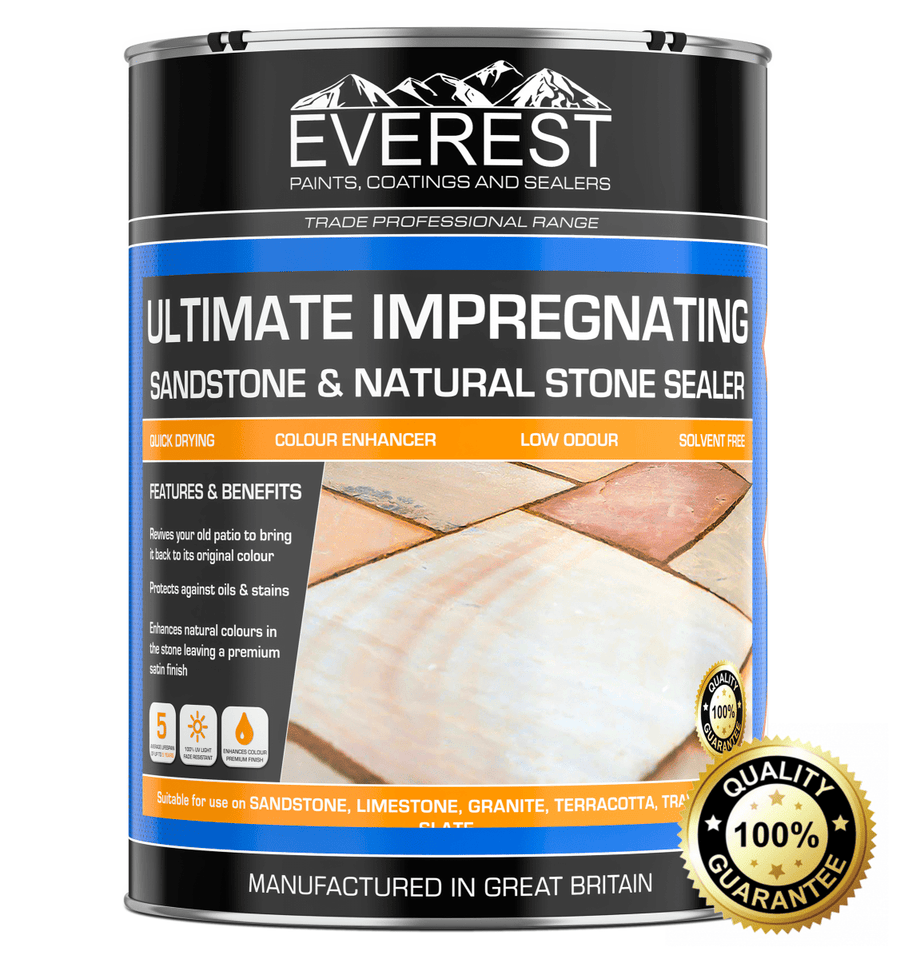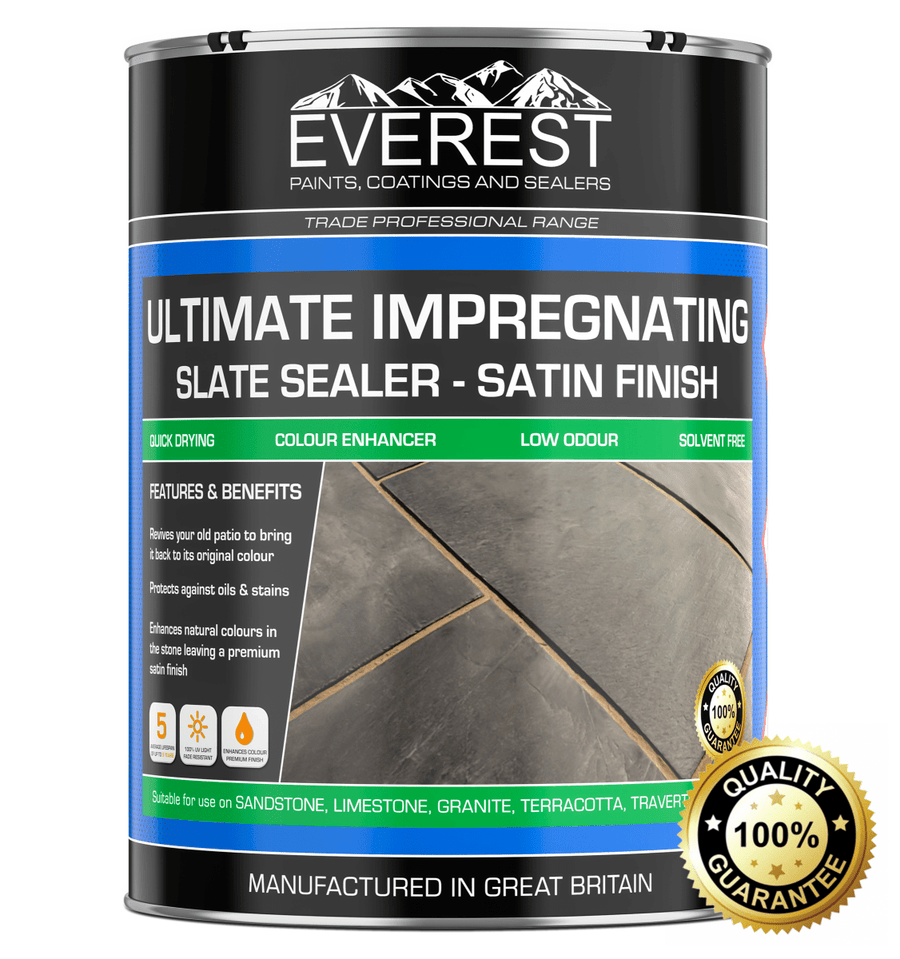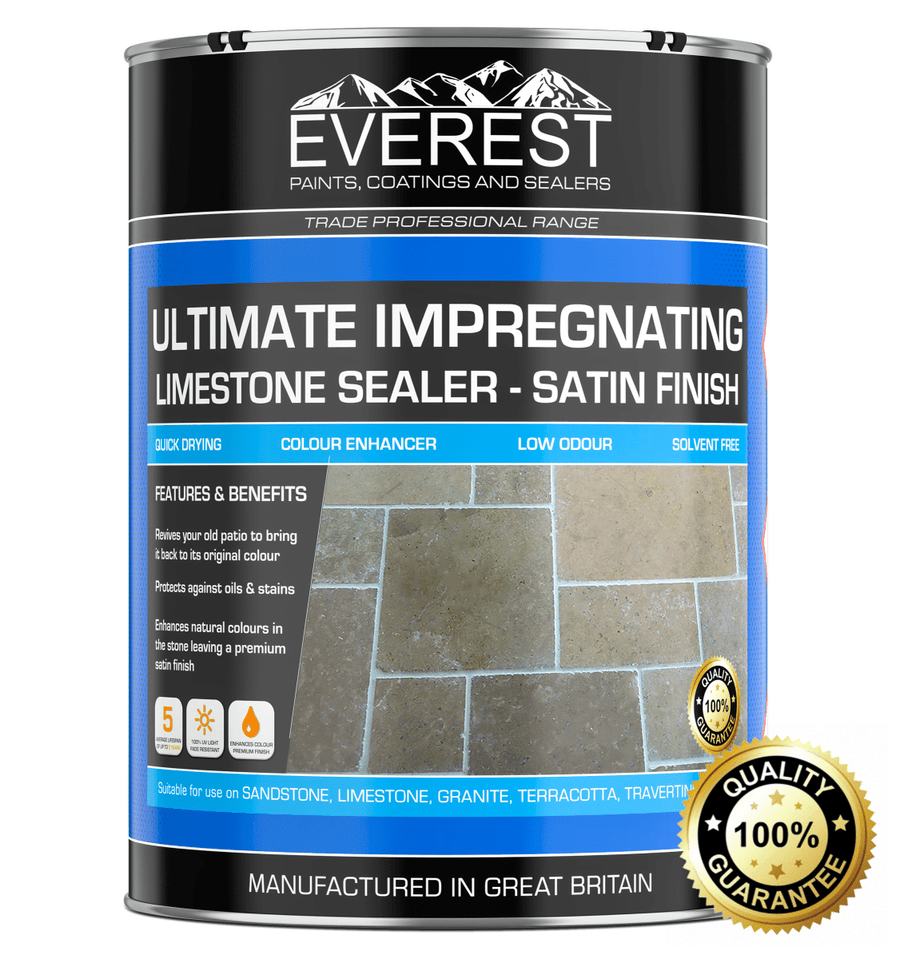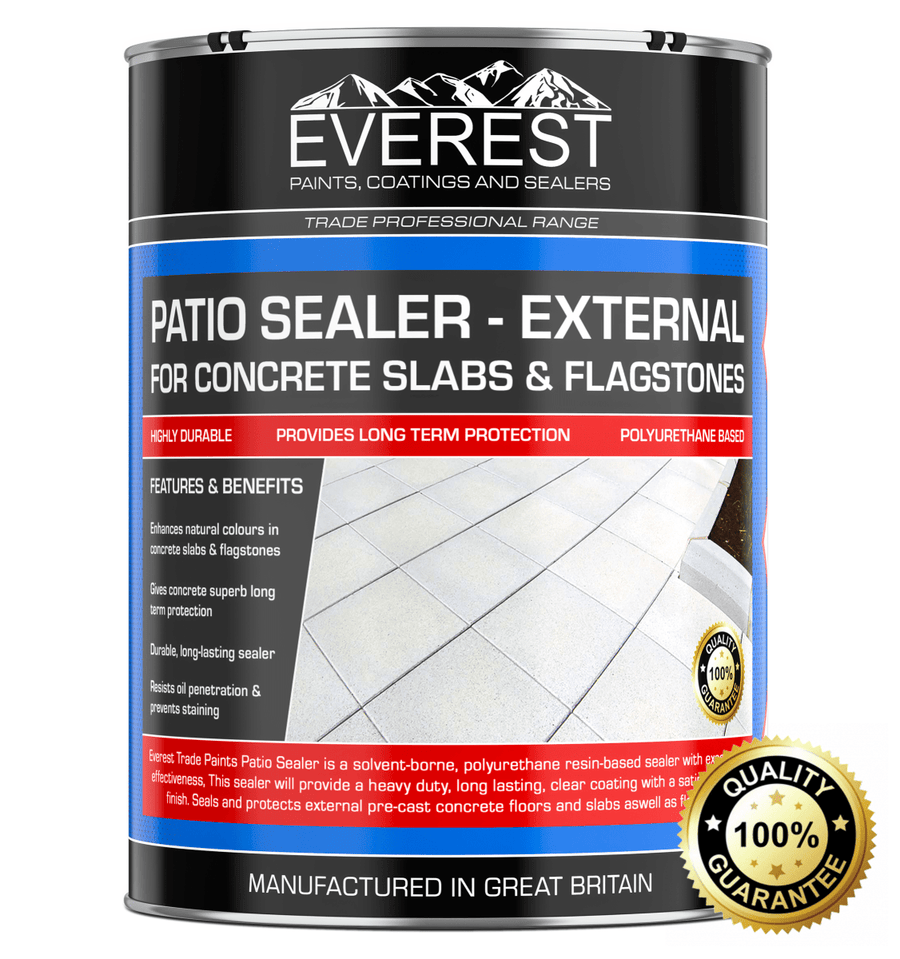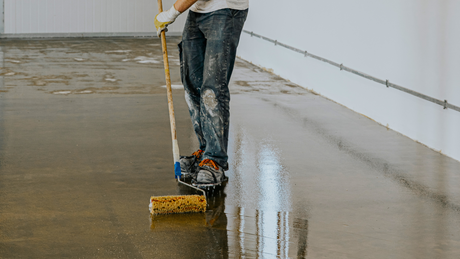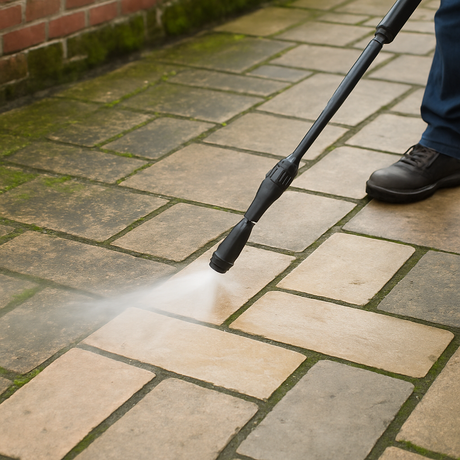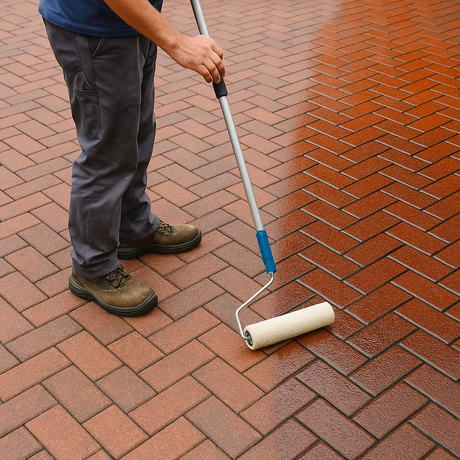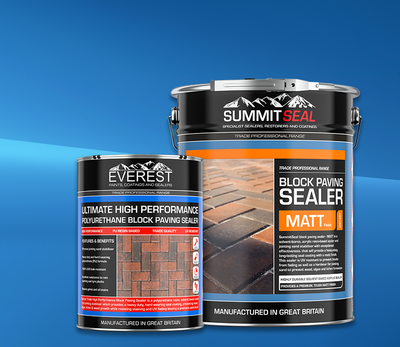Can You Use a Patio Sealer in Winter?
Short answer: yes—you can seal in winter in the UK. But you’ll need to pick the right patio sealer chemistry, work within safe temperature windows, and prepare the surface carefully to avoid whitening, patchiness, or early failure.
Temperature Guidelines For Patio Sealer
In winter, air and substrate temperatures—and what they’ll do over the next 24–48 hours—matter more than anything else.
- Ideal application window: roughly 5–25 °C. Below ~4 °C risks poor film formation and whitening.
- Watch night-time lows: a mild afternoon won’t save a job that hits frost at 2 a.m. Aim for a rising temperature profile with no frost due.
- Dry weather only: allow a rain-free window during application and cure (check your product’s guidance; 24–48 hrs is typical).
- Substrate must be dry: winter dew can keep slabs damp even on “dry” days. Test a few joints and the underside of a loose block/slab if possible.
| Sealer family (Premium Paints) | Typical winter min* | Recoat / touch-dry (guide) | Winter notes |
|---|---|---|---|
| Water-based acrylic (incl. silane-modified Dry / Enhance / Wet-Look) | ≥ 8–10 °C | Touch-dry ~3–4 hrs; binder cure ~1 day; hydrophobic peak ~7 days | Keep drums warm; avoid cold, shaded slabs that won’t dry. Best on dry, mild winter days. |
| PU 1K (polyurethane) Matt / Silk | ≥ 5–8 °C | Touch-dry varies with film build (check label) | More forgiving in the cold; still avoid frost, standing water and late-day application. |
| Solvent-based acrylic (imprinted concrete; Matt / Silk) | ≥ 5–8 °C | Faster surface set in dry air | Lower freeze risk; ensure substrate dryness to prevent whitening under the film. |
| Tarmac/asphalt WB acrylic (Matt / Satin) | ≥ 8–10 °C | Touch-dry ~3–4 hrs | Apply early in the day; avoid cold wind tunnels and late-day shade. |
*Always follow the exact temperature and weather limits on the tin/TDS for your chosen product.
Types of Patio Paint Sealers & Cold-Weather Considerations
Water-Based Acrylic (with optional silane)
Our water-based acrylics are low odour and available in Dry/Natural, Colour Enhancer and Wet-Look. Silane-modified variants improve adhesion and long-term hydrophobicity—especially useful for natural stone and block paving in wet months. In winter, only apply on dry days with ≥8–10 °C air and slab temps and no frost forecast.
PU 1K (Polyurethane)
PU produces a tougher, longer-lasting film—ideal for block paving and concrete where you want durability. It’s generally more forgiving at lower temps (down to ~5–8 °C), but you still need a dry, frost-free window.
Solvent-Based Acrylic
The go-to for imprinted/stamped concrete in winter: strong colour enrichment, good clarity, and less sensitive to chill than WB systems. The substrate still must be dry; moisture trapped under solvent acrylic can bloom white.
Porous vs. Low-Porosity Surfaces
- Porous (sandstone, older concrete, block): benefit from silane-modified WB acrylics or PU; ensure deep dryness before coating.
- Low-porosity (porcelain): often doesn’t need sealing; if desired for aesthetics, use a compatible topical coating sparingly, following the manufacturer’s guidance.
Considerations for Newly Laid Patios
- New concrete: allow a full cure (typically ~28 days). Sealing too soon can trap moisture and salts, leading to whitening or flaking—worse in cold snaps.
- Newly pointed paving: follow the pointing compound manufacturer’s minimum cure time and temperature guidance before sealing.
- Efflorescence: allow time for salts to surface and be removed; treat with an efflorescence remover if visible, then let the patio dry fully.
- Pre-sealing porous stones: on stain-sensitive stones (e.g., limestone), a light pre-seal before grouting can prevent grout haze—ensure temperatures are within range.
Purpose & Benefits of Using Patio Paint Sealer
Without sealing, paving is exposed to the elements and can deteriorate faster, leading to higher repair or replacement costs. A patio sealer provides multiple long-term benefits, especially in the winter months:
- Protection: slows water ingress, salt attack and freeze–thaw damage—prime winter risks.
- Appearance: preserves colour and texture; choose natural Dry, subtle Enhance, or Wet-Look; PU finishes in Matt or Silk.
- Maintenance: easier cleaning, reduced algae pickup, and fewer stubborn oil/BBQ stains.
Reapplication & Winter Maintenance of Sealed Patios
Patio sealer is an ongoing task that requires reapplication and further maintenance. Neglecting maintenance of your sealer allows dirt and water to penetrate the surface, undoing the benefits.
- Recoat intervals: WB acrylics typically every 2–3 years (usage/weather dependant); PU can extend intervals. Spot top-ups after heavy traffic or de-icing salt exposure.
- Clean first: wash, degrease oil spots, and remove efflorescence before resealing. Never seal over damp.
- Routine care: sweep grit, clear leaves quickly, and rinse spills. In freezing forecasts, avoid pooling water on the surface.
Choose Premium Paints For Your Patio Paint Sealer
We stock UK-ready chemistries for winter-sensible application: water-based acrylics (with silane) in Dry/Enhance/Wet-Look, PU 1K in Matt/Silk for robust film build, solvent-based acrylic for imprinted concrete clarity, and WB acrylic tarmac paints in Matt/Satin. You’ll also find cleaners, oil-stain removers and efflorescence treatments to set the job up for success.
Not sure which way to go for your patio, temperature, and deadline? Our team will specify a system, step-by-step, for free.


